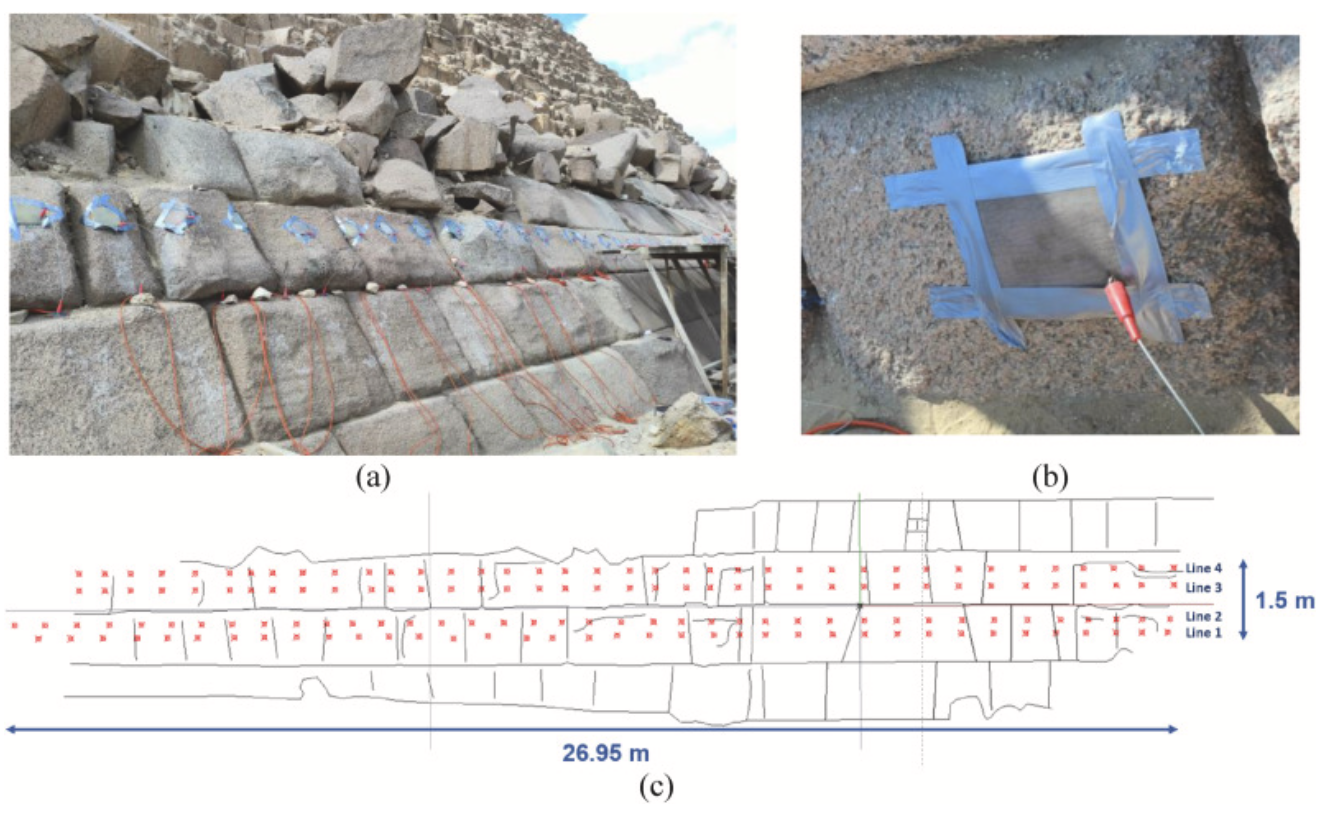New Scans Reveal Hidden Chambers in the Menkaure Pyramid at Giza!
A team of researchers from Cairo University and the Technical University of Munich has uncovered two previously unknown air-filled cavities inside the Menkaure Pyramid at Giza, the smallest of the iconic trio. Their findings, part of the ongoing ScanPyramids project and recently published in NDT & E International, lend fresh support to a long-standing theory that a second entrance may lie hidden on the pyramid’s eastern side.
For years, Egyptologists have been intrigued by a smooth, polished patch of granite blocks on the pyramid’s eastern façade. This neatly finished area, roughly four metres high and six metres wide, stands out dramatically from the surrounding stonework. Its appearance closely resembles the framing stones around the well-known northern entrance.
In 2019, researcher Stijn van den Hoven proposed that this polished zone might actually mark a second doorway — but until now, no compelling evidence had emerged to prove it.
To investigate, the ScanPyramids team turned to three non-invasive imaging techniques:
Electrical Resistivity Tomography (ERT) — measures electrical resistance to detect changes in density.
Ground Penetrating Radar (GPR) — uses electromagnetic reflections to map structures.
Ultrasonic Testing (UST) — tracks the movement of sound waves through stone.
Each method reveals different aspects of what lies beneath the surface. By combining all three using a process known as Image Fusion, the researchers were able to align their data and build a far more precise picture of the pyramid’s interior.
This multi-layered approach confirmed the presence of two voids directly behind the polished granite blocks.
The first cavity, labelled A1, sits about 1.35 metres beneath the surface and measures roughly 1.5 metres wide by 1 metre high. The second, A2, lies slightly closer to the exterior at 1.13 metres deep and measures around 0.9 by 0.7 metres. Both appear to be air-filled spaces within the limestone core.
Computer simulations suggest these anomalies aren’t the result of natural cracks or weathering but are far more likely to be deliberate architectural features.
This marks the first time any structural anomaly has been detected behind the eastern face of the Menkaure Pyramid.
Professor Christian Grosse of TUM notes that non-destructive imaging allows researchers to study ancient structures without causing any damage. According to him, these results bring scholars “a big step closer” to confirming whether a second entrance truly exists.
However, the team stresses that much remains unknown. The scanning techniques used can only penetrate so far, so the corridors or chambers connected to these voids, if they exist, remain uncharted. The researchers are calling for further investigation using more advanced methods such as muon imaging or endoscopic exploration.
This discovery follows the ScanPyramids team’s 2023 revelation of a hidden corridor inside the Great Pyramid of Khufu. Together, these breakthroughs highlight how cutting-edge imaging technologies are transforming our understanding of ancient Egyptian engineering.
While the exact purpose of the Menkaure cavities remains a mystery, the emerging evidence suggests they were part of an intentional design. The eastern side of the pyramid, often overshadowed by the northern entrance, may still be hiding secrets from 4,000 years ago, waiting for modern science to uncover them.

